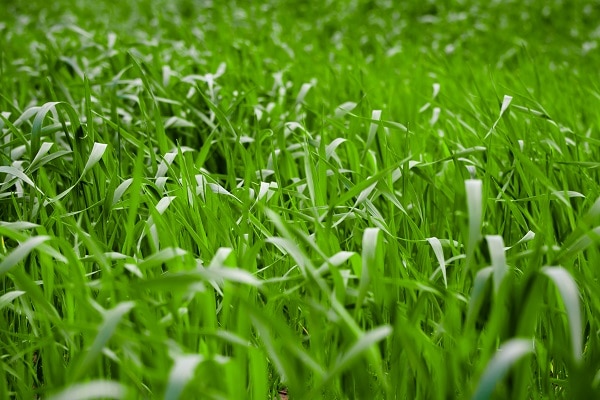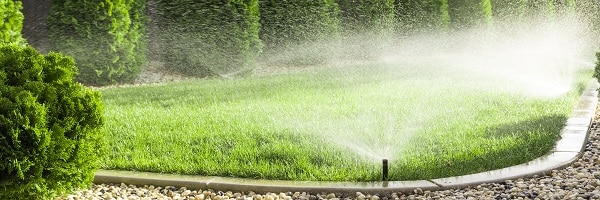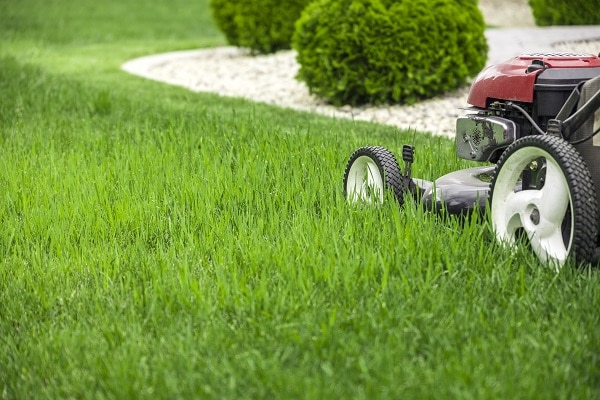Having a green lawn is the ultimate American dream. A well-manicured yard with lush, green grass is the perfect backdrop to any home. So it’s no surprise that homeowners go to great lengths to make sure their lawn looks good. But what if your lawn is looking a little worse for wear? Don’t worry; this post is here to help! This blog post will discuss how to get a perfect green lawn, regardless of your yard’s condition.
Contents
Dealing With Thatch

Weeds and grasses can grow in these layers, which are known as thatch. It is a layer of primarily dead grass that covers the soil of your lawn. It consists of un-decomposed stems, stolons, rhizomes, and roots. Dethatching is the process of removing the thatch layer from your lawn.
If it grows to be more than 1/2 inch thick, it can harm your grass, which is why you should remove it using a dethatcher device. If you have a thick layer (about 3/4 inch or more) of thatch, you will need a core aerator or a vertical mower. Most local rental shops will have these available at a reasonable price.
Getting Enough Water

What is the average yearly rainfall in your area? If you live in a dry climate, growing grass successfully requires installing an irrigation system. However, allowing Mother Nature to water in the misty Pacific Northwest is a simple solution. However, for most people, the choice of whether or not to install an irrigation system for lawn watering will not be as simple. Cost is frequently a deciding factor, but also consider water usage. The average lawn sprinkler system uses 22 gallons of water per minute. That’s a lot of water!
If you live in an arid region, it is best to install an irrigation system and set it to water your lawn two or three times per week for short periods of time. This will give your grass a deep watering to stay healthy without wasting water. Just keep in mind if you overwater your lawn, it may create several issues. But, on the other hand, an under-watered lawn is unable to compete with weeds and diseases, let alone stay green.
Weed Control

Fertilizing your grass together with lawn weed management is a necessary component of maintaining it. Your grass’s root system will grow and cover any bare spots as it absorbs the nutrients in the fertilizer. Weed seeds rely on empty spaces for their survival. So you’re striking weeds where it hurts when you remove those locations. Ideally, as a result of your fertilizing and other upkeep efforts, you’ll be able to get your grass to the point where it crowds out most weeds.
Slow-release fertilizers, which extend the feeding period and are less likely to burn grass than other formulations, are the greatest way to feed turf plants. You may also choose to feed your grass and manage weeds simultaneously with a “weed and feed” fertilizer, which is essentially food for grass and poison for weeds. However, these fertilizers aren’t organic, so you should only use them twice a year.
Follow A Fertilizer Schedule

The Scotts Company, a major fertilizer producer, suggests applying lawn fertilizers in four increments. Naturally, the dates will differ depending on your location. Another important consideration is the sort of grass you cultivate. Always read the package labels thoroughly before using them, and get staff’s advice at local garden stores or local extension services. If you live in the northeast United States and have a lawn made up of a combination of cool-season grasses, you might begin by feeding it with a pre-emergent fertilizer in May to keep crabgrass at bay. Then, follow it up in June with another lawn fertilizer that performs two roles simultaneously.
The additional function (besides fertilizing) in this case is weed control. For the latter, you’ll need a product with a post-emergent herbicide to kill weeds that have sprouted in your grass. Don’t forget to winterize your yard in the fall. It’s not difficult to recall which fertilizers to buy for this season because they will frequently include “winterizer” in their names. These products help your grass develop a more robust root system to survive the winter
Mowing At The Right Height

Cutting the lawn with a mower set at the correct mowing height can save you from having to bag your grass clippings, even if you don’t own a mulching mower. When your grass is dry and 3 to 3-1/2 inches tall, mow it. Never cut it lower than 2 to 2-1/2 inches or remove more than one-third of the leaf surface during a single trim. The idea of this grooming tip is that the nutrients in the grass clippings may benefit your lawn if they are left where they fall after mowing. The bulk of the grass clippings will be low if you follow this guideline and only take an inch off the top of your lawn at a time. This mowing technique entails more frequent cutting, so you’ll have to sharpen your mower blade more often.
However, the result will be a healthier lawn that receives nutrients that would otherwise be hauled away. Furthermore, maintaining a neat and trim appearance increases the thickness of the grass. You are, in fact, “pinching” your grass plants each time you mow them, the same as you would with many houseplants or garden flowers to make them sturdier. Keep in mind that with mulching mowers, you don’t have to be as cautious about the height of your lawn since the grass clippings are smaller. This is much more practical for individuals who don’t wear tape measures on their belts daily.
Conclusion
In conclusion, getting a perfect green lawn requires some effort, but it’s well worth it in the end. By following the tips outlined in this article, you’ll be sure to have a lush, healthy lawn that will be the envy of your neighborhood. Also, don’t forget to contact your local garden store or extension service for more specific advice. Then, with a little bit of knowledge and elbow grease, you’ll have a green lawn that you can be proud of.



